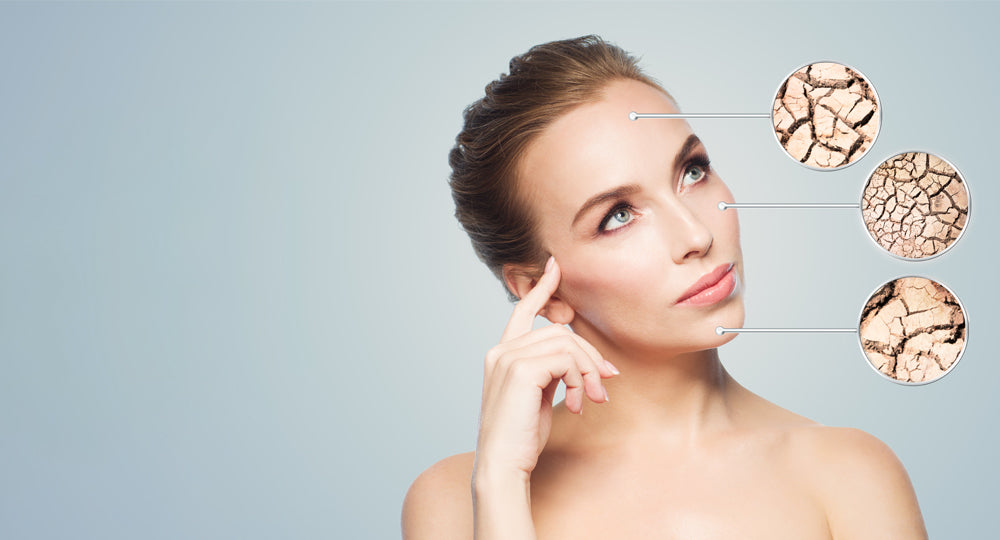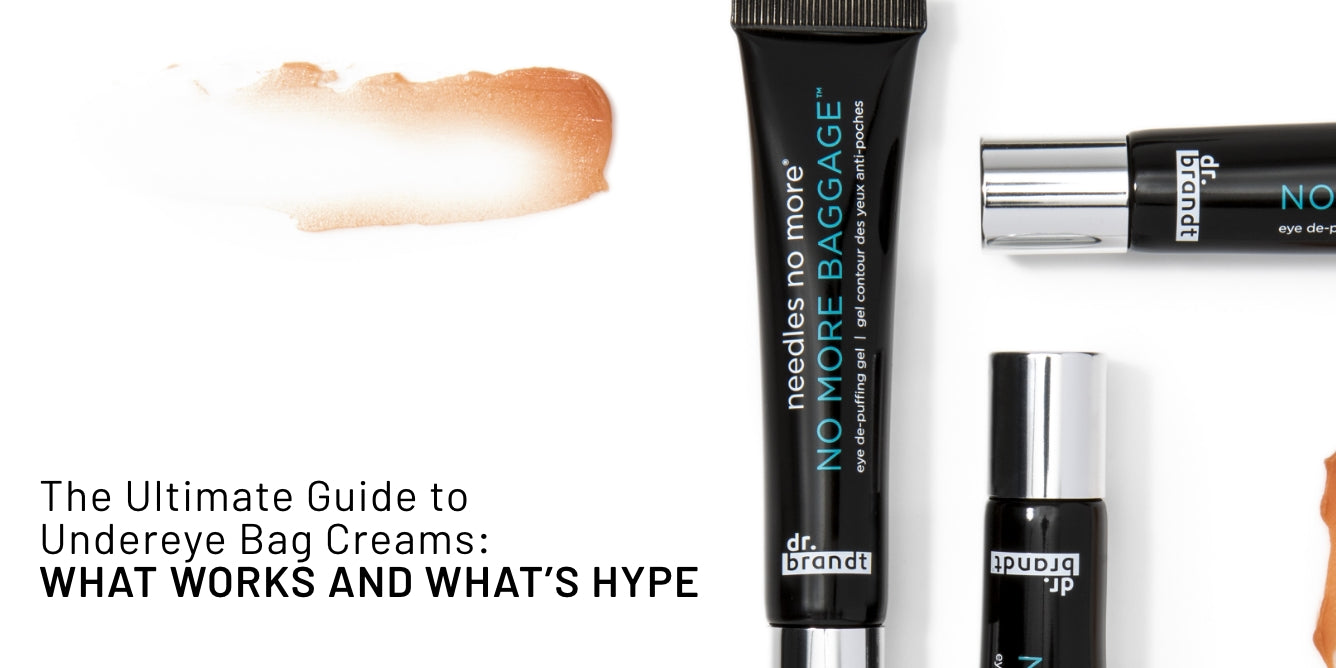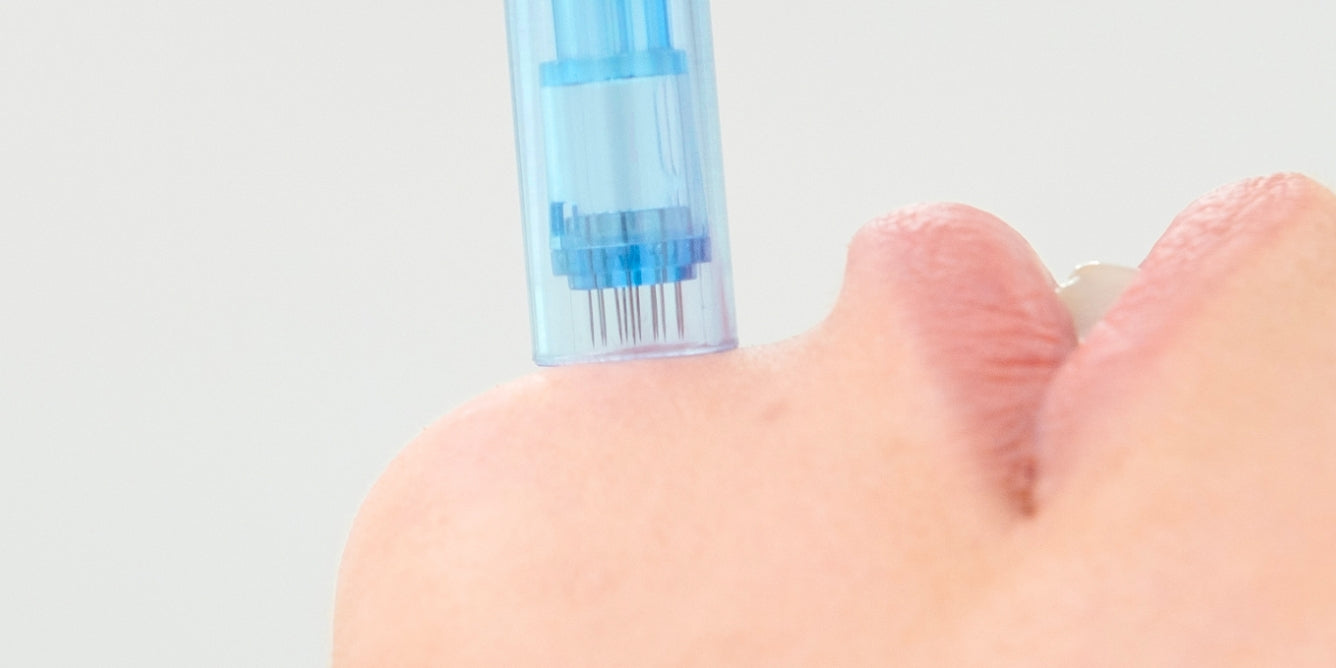
For a molecule to be stable, it must possess an even number of electrons. When one is missing, the molecule is forced to seek out another electron elsewhere. In doing so, it can cause significant DNA degeneration and other important cell components. Molecules with uneven numbers of electrons are known as free radicals. Free radicals are produced by the body in reaction to environmental stressors, carcinogen exposure, or simply your body's natural metabolism processes. By damaging healthy cells—thus creating oxidative stress—free radicals play a significant role in aging, as well as the development of cancer. Luckily, there are things you can do to neutralize them both within your body and your skin.
Below, board-certified dermatologist Dr. Shasa Hu, from our Skin Advisory Board, takes us through the basics of free radicals - what they are, their effects, where they come from, and how they damage skin.
What are free radicals in the body?
There are many types of free radicals. For people and other aerobic (i.e. air-breathing) organisms, the most common type of free radical is known as a Reactive Oxygen Species (ROS). Oxygen, of course, is fundamental to human life: when we breathe oxygen in from the air, it gets transferred into our circulating red blood cells, reacting with nutrients such as fats and carbohydrates to produce and increase energy. This process literally keeps us alive—but like all things in life, there is a delicate balance at play. ROS in the body are neutralized by antioxidants, which are found in the food we eat—fruits and vegetables in particular. In the simplest terms, antioxidants are another kind of molecule that can pass off one of their electrons to free radicals without becoming unstable, thus restoring equilibrium and preventing cell damage. When the proportion of free radicals in the body vastly surpasses its proportion of antioxidants, cells are subjected to what's known as oxidative stress. This imbalance can lead to accelerated aging, inflammation, and abnormal cellular metabolism, which in turn can contribute to the onset of diabetes, atherosclerosis, heart disease or even cancer.
How are free radicals formed?
The majority of free radicals form as a byproduct of normal cellular function related to oxygen metabolism. As mentioned earlier, oxygen free radicals are one of the key culprits in accelerating human aging, and contribute to a variety of health problems ranging from inflammation to cancer. Free radicals are not an external occurrence, but they are often produced by the body in responseto external factors. These may include actions like UV exposure, a diet heavy in red meat, sugar, fat, and alcohol, a smoking habit, or even as a byproduct of your immune system's fight against infections. In the next section, we'll look at some of these causes in more detail.

How do free radicals damage skin?
First, it may help to understand the two main types of aging: intrinsic and extrinsic.
Intrinsic aging is a natural process involving the natural senescence (i.e. deterioration) of cells over time. In intrinsic aging, the accumulation of free radicals that creates oxidative stress is produced by the metabolic processes that ensure our bodies' baseline cellular function: the housekeeping of your organ system, in a sense. Extrinsic aging, meanwhile, involves the generation of free radicals via oxidative metabolism and UV light damage. (This is why sunscreen is so important!)
Whether intrinsic or extrinsic in origin, the aging process involves a complex chain of biochemical reactions that often begins with an excess of free radicals in the body. Looking to stabilize their unpaired electrons, these then go scavenging for a free electron from your body's other cells. The result is cellular DNA damage, reduced production of antioxidants levels and increased production of matrix metalloproteinases (MMPs) that break down collagen and elastin in our dermis. As collagen and elastin get damaged, nutrient transfer from blood vessels to our skin cells becomes less effective, and finally, visible signs of aging appear: fine lines, coarser texture, pigmentation, uneven skin tone, loss of elasticity, and so on. When DNA mutations accumulate, they can even result in impaired wound healing skin cancers. This is why we, as dermatologists, work so hard to educate the public about applying a daily broad-spectrum sunscreen that's 30 SPF or higher. Skin cancer prevention aside, this is the number one way to slow down extrinsic aging.
In addition to sun protection and skincare, an integrative dermatology approach might involve minimizing free radical production through lifestyle choices. These include to avoid smoking, less alcohol consumption, a diet rich in fruits, vegetables, and nuts, minimal consumption of pesticide-treated produce, or, to the extent that it's possible for you, living in an area with less ambient pollution. And of course, you can incorporate more antioxidants and vitamin supplementation into both your diet and skincare routine to help protect against free radicals.
Antioxidants for body and skin
Your diet (including supplement intake) should be your primary source of antioxidants. However, there is evidence that topically-applied antioxidants can provide skincare benefits, and can aid the process of aging gracefully. Among the most powerful topical antioxidants are vitamin C, vitamin E, resveratrol, and niacinamide.

Vitamin C (Ascorbic acid)
Ascorbic acid (vitamin C) is the most abundant antioxidant in skin. Vitamin C helps eliminate oxidative stress, and is essential to the process of collagen synthesis. Studies have also found that topical ascorbic acid helps to reduce hyperpigmentation due to its inhibitory effect on tyrosinase (the enzyme that regulates melanin production), as well as improve the skin barrier. Topical vitamin C can even help protect skin from UVB-induced oxidative damage.
Vitamin E
Tocopherols, also known as vitamin E, have been shown to be an effective free radical scavenger. Numerous studies indicate multiple antioxidant benefits with topical vitamin E, including the suppression of UVB-induced redness, swelling, and lipid degradation. Alpha, or α-tocopherol also helps to combat the oxidative stress induced by UVA exposure. This is why topical vitamin E is often used in sunscreens.
Resveratrol
Resveratrol is a naturally-occurring molecule often associated with red wine. It belongs to a family of compounds known as polyphenols. Resveratrol is regarded as a high-potency antioxidant in skincare because of its ability to protect skin from photodamage. Studies have implicated it may be even more effective than vitamin C or E: in one study, resveratrol was found to be 95% efficient at preventing lipid damage from UVB radiation, compared with ~65% for vitamin E and ~37% for vitamin C.
Niacinamide
Niacinamide is another potent antioxidant used frequently in skin care. Its many potential benefits include reducing inflammation, brightening dark spots and hyperpigmentation, preventing blemishes, and providing added protection from UVs. Niacinamide can even inhibit certain enzymes to promote DNA repair. Studies have also found niacinamide to be a helpful anti‐pollution agent because of its ability to protect cells from common air pollutants such as squalene monohydroperoxides.
The best antioxidant foods
Increasing your intake of antioxidant-rich foods is clearly associated with better health, and is likely the best way to fight free radicals in the body. Food is our primary source of antioxidants, and plant-based foods in particular contain the most. In general, the more intense the color of a fruit or vegetable, the higher its antioxidant content. The top antioxidant rich foods are:
- Grapes
- Blueberries
- Raspberries
- Strawberries
- Oranges
- Plums
- Apples
- Dark leafy greens (kale, collard greens, spinach)
- Sweet potatoes
- Carrots
- Red bell peppers
- Beets
Try to eat foods like these alongside legumes like red kidney beans, lentils, black-eyed peas, and pinto beans, which can help boost their antioxidant value. Produce aside, walnuts, brazil nuts, and pecans, as well as all kinds of seafood (sardines, salmon, mackerel, oysters, albacore tuna, herring) are equally rich in antioxidant content.
Drinks-wise, green tea is a reputed source of antioxidants as it contains anthocyanin and pro-anthocyanin, two potent phytochemicals that help to neutralize free radicals. You might even opt for a turmeric-based drink: multiple scientific studies back turmeric's natural anti-inflammatory, antimicrobial, antioxidant, and anti‐cancer properties.




Leave a comment (all fields required)